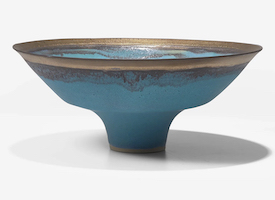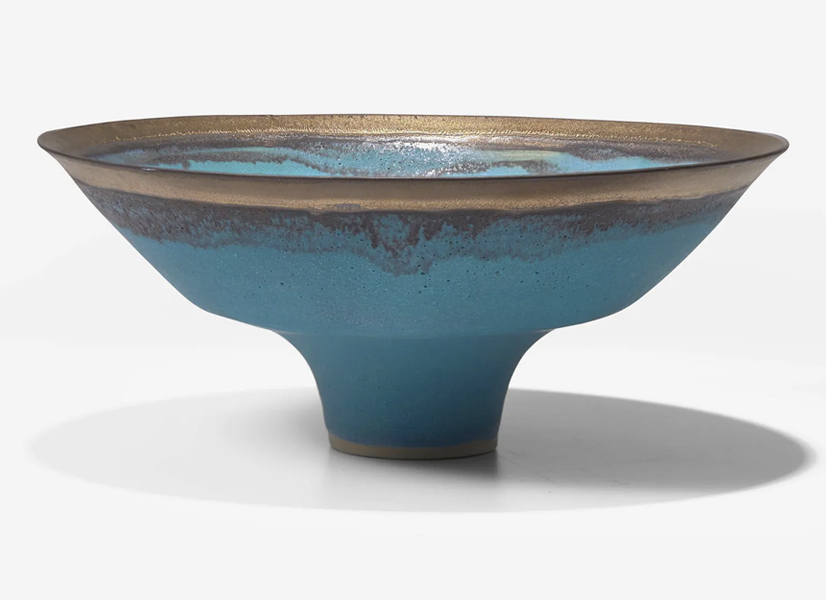
NEW YORK — The story of studio ceramics is inextricably linked to multiple countries and cultures, so when looking at ceramicists working in Great Britain in the 20th century, we actually need to cast our gaze across the world. These British artists were often inspired by pottery they saw on their travels or by exported vessels from far-flung locations. Similarly, the vessels these Britons made might also travel to Asia or the Americas, inspiring artisans there.
For centuries, Great Britain was better known for its painters than for its ceramics. The medium, perfected by masters in China and Japan, was, for a long time in the West, lumped in with craft instead of fine art. But that changed in the 20th century thanks to British studio ceramicists such as Bernard Leach (1887-1979) who founded the Leach Pottery studio in 1979 in St. Ives in Cornwall. While it’s difficult to tease out what can be defined as the British aesthetic in ceramics from the myriad of influences floating around as well as the individual styles of each potter, there is no question that studio ceramics began establishing itself in Great Britain after World War I.
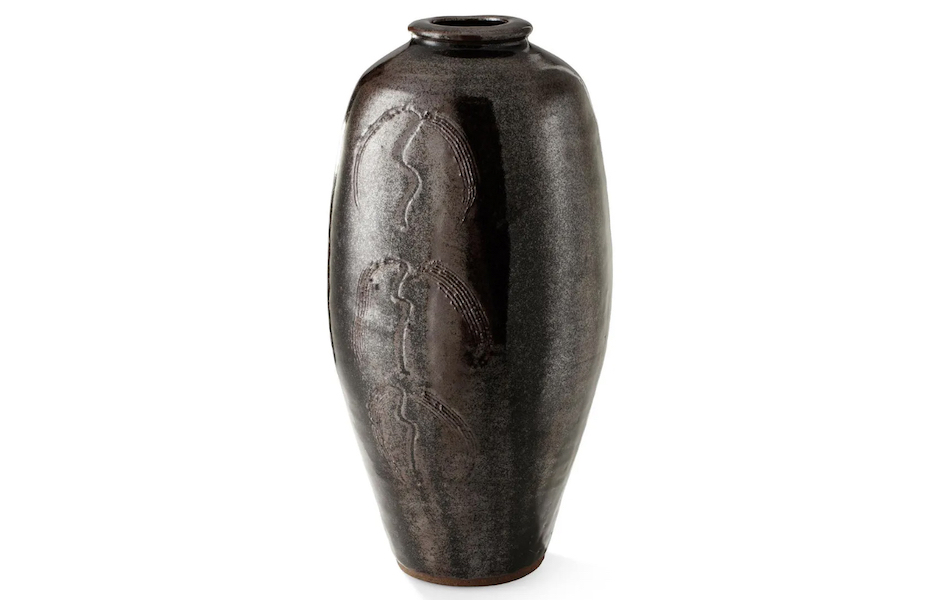
Ceramicists such as Leach, who was born in Hong Kong but raised in England, traveled to Japan and back, and helped bridge East and West tastes, propelled the studio ceramics movement in Great Britain. He helped elevate ceramics beyond functional vases, chargers and bowls into an art form. He has been called the “father of British studio pottery.” A Leach vase with an incised willow tree design in a tenmoku glaze, standing just above 14in tall, sold for $5,281 plus the buyer’s premium in October 2021 at Lyon & Turnbull.
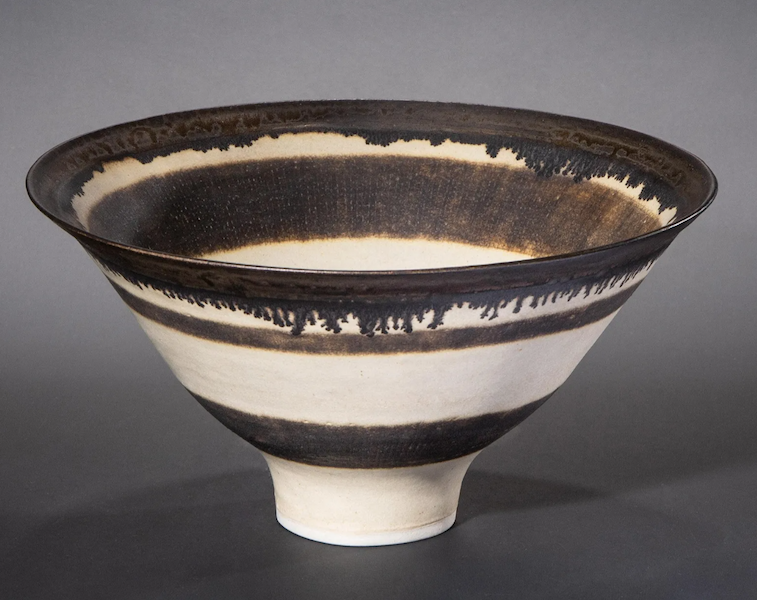
A large bowl with sgraffito and a light golden manganese rim by British studio ceramicist Lucie Rie went for €55,000 (about $61,200) plus the buyer’s premium in April 2023. Image courtesy of Kunst & Design Auktionshaus and LiveAuctioneers.
Among the best-known 20th-century British potters was Dame Lucie Rie (Austrian and British, 1902-1995). She was celebrated for her Modernist vessels such as a large bowl decorated with sgraffito bands in manganese against a background that is the color of sand. The bowl, having a diameter of about 11in, achieved $61,200 plus the buyer’s premium in April 2023 at Kunst & Design Auktionshaus. Another Rie work, a circa-1984 footed bowl with a rich turquoise glaze and a golden manganese rim, achieved $37,500 plus the buyer’s premium in October 2o22 at Freeman’s.
While she was a potter in her native Austria, when she emigrated to England, she basically started her career anew. By the 1950s, her pieces had developed a modern and sophisticated look that coincided with innovations in the field. “A big change of direction for studio ceramics came with the hand building of the late 1950s and 1960s,” states the website of the Discover Bucks Museum in Aylesbury, England. The museum notes that potters were resisting traditional techniques of throwing clay vessels on a wheel and instead were gravitating towards building pieces by hand for more artistic control and freedom. They fashioned works out of clay, building them up layer by layer, or slab by slab, and then tore parts away.
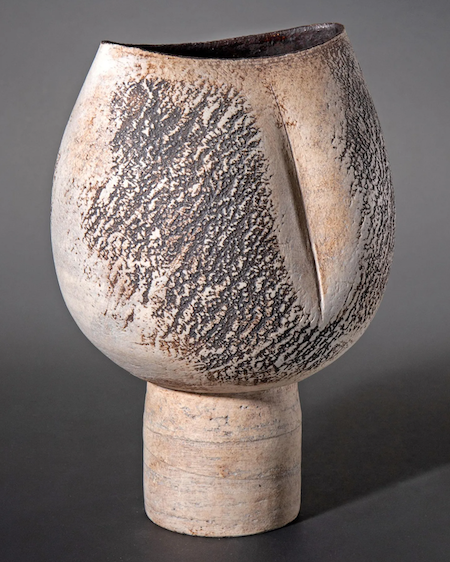
While embracing similar techniques as Rie, Hans Coper (German and British, 1920-1981) broke new ground with uniquely shaped vessels that were said to be inspired by early Mediterranean artworks and sculpture. A 7½in-tall vase having a bulged body, a vertical notch in the middle and set on a cylindrical foot, earned $51,185 plus the buyer’s premium in April 2023 at Kunst & Design Auktionshaus. Marrying painting with sculpture in this example, Coper created a highly textured surface with dark brown decoration over a light gray and sandy background.
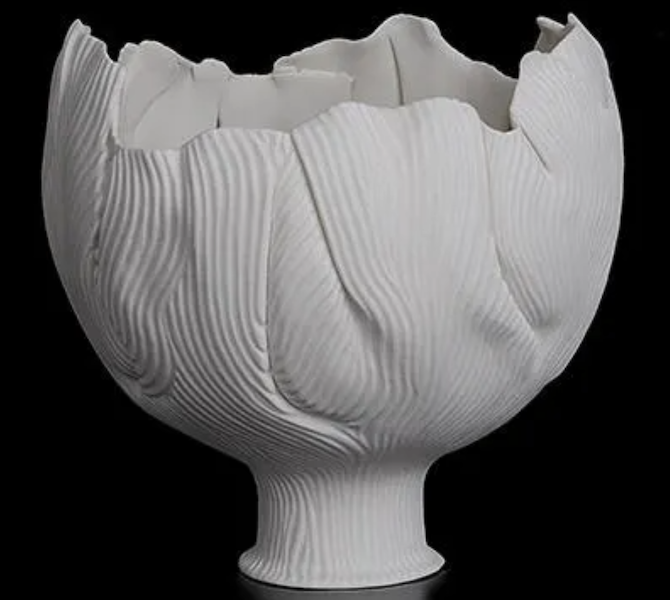
A vessel made in 1983 by British studio ceramicist Mary Rogers, titled ‘Striated Crinoid,’ brought £14,000 (roughly $17,489) plus the buyer’s premium in November 2020. Image courtesy of Maak Contemporary Ceramics and LiveAuctioneers.
Studio ceramics has continued to evolve in the succeeding decades. Among the contemporary British studio ceramicists taking this art form to new heights are Mary Rogers (b. 1929-), who is perhaps most recognized for her translucent vessels that appear paper-thin, and also pieces that are painstakingly worked using a variety of techniques. One of her vessels from 1983, titled Striated Crinoid, is unglazed and features a pinched form that was folded and carved with delicate grooves. It made $17,489 plus the buyer’s premium in November 2020 at Maak Contemporary Ceramics.
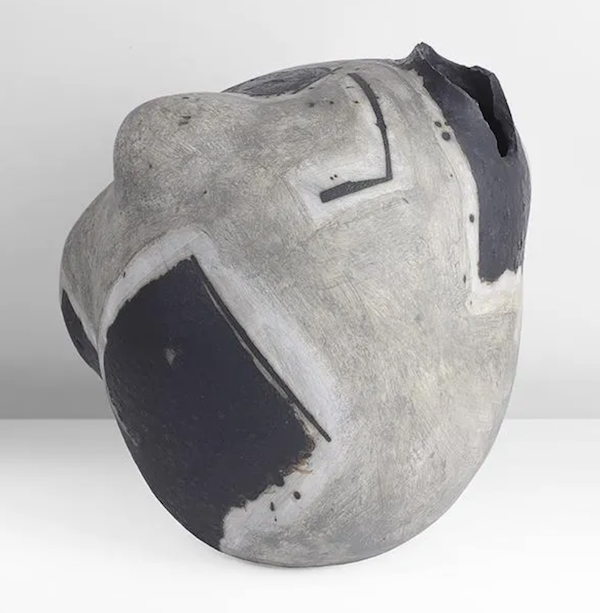
Early in his career, Gordon Baldwin (b. 1932-) mostly created functional objects that were inspired by landscapes. As time passed, however, he found inspiration in contemporary sculpture and began experimenting with hand-building. He is known for reworking and refiring pieces repeatedly to build up sculptural forms that he embellishes with abstract painted decoration. In the case of Vessel from an Inscape, a 1989 earthenware piece, he made an enclosed form having dark and light gray brushed and glazed abstract markings and spots around a rippled body. An opening on one side has a raggedly torn rim that resembles a gaping mouth. The piece, standing nearly 14in tall, brought $14,984 plus the buyer’s premium in November 2020 at Maak Contemporary Ceramics. “Baldwin has been very influential in moving ceramics towards sculpted structures and away from traditional functional pots,” writes the Erskine, Hall & Coe gallery in London on its website.
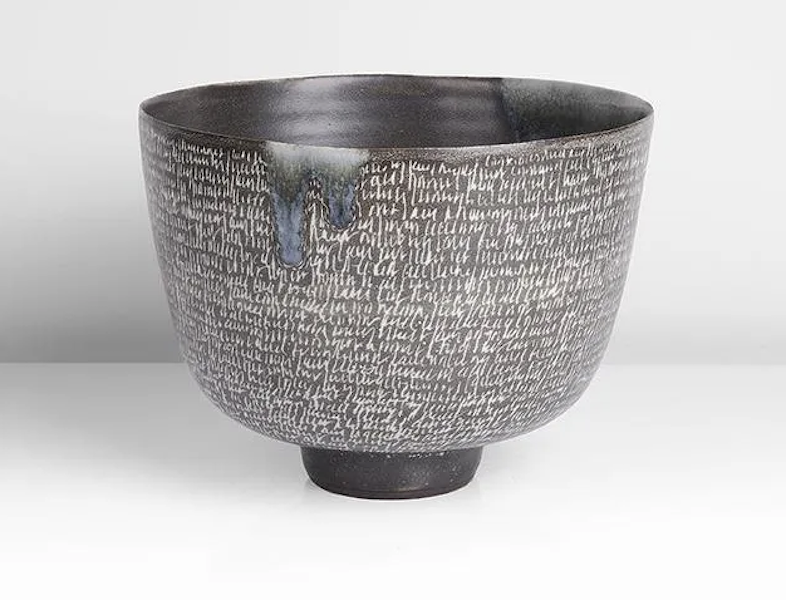
Known today for his complex studio works, writer-potter Rupert Spira (b. 1960-) is sought after in particular for his open bowls that have surfaces covered with poetry that he hand-writes. A circular bowl, measuring nearly 6in tall and having a 7.7-in diameter, realized $7,496 plus the buyer’s premium in July 2020 at Maak Contemporary Ceramics. The 2003 bowl has fine script incised with a black pigment over a white glaze. Another Spira work of note, a circular bowl with a small footed base and a vivid red flambe glaze, brought £1,900 (about $2,300) plus the buyer’s premium in April 2018 at John Nicholson Auctioneers.
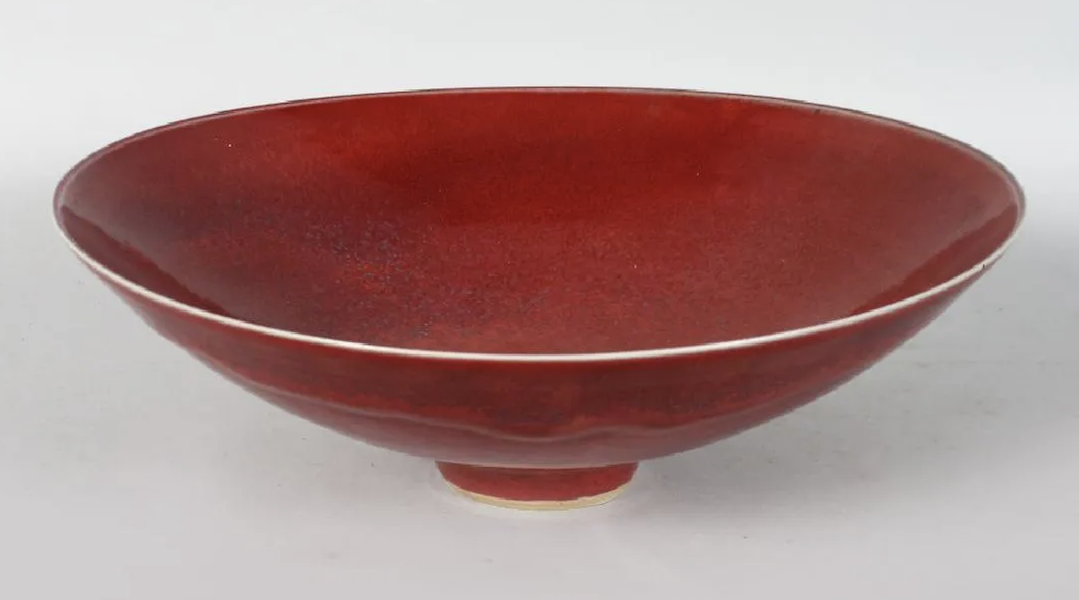
British studio ceramics as a field is going from strength to strength, with record prices being achieved for some practitioners and interest growing among collectors and scholars. Overall, these British artists are pushing this deceptively simple medium to new, previously unimagined heights by creating striking forms enhanced with sophisticated visual effects.


